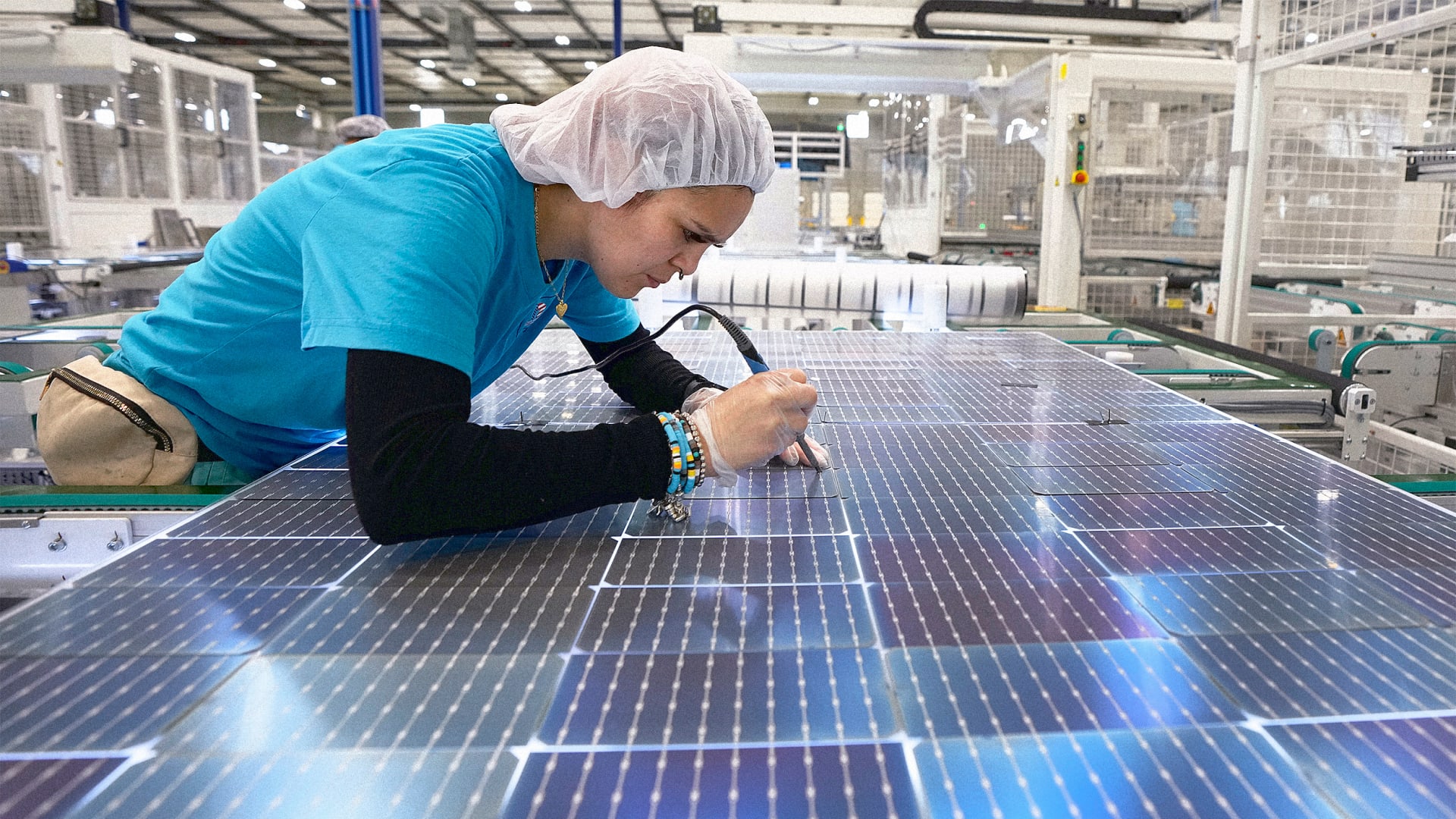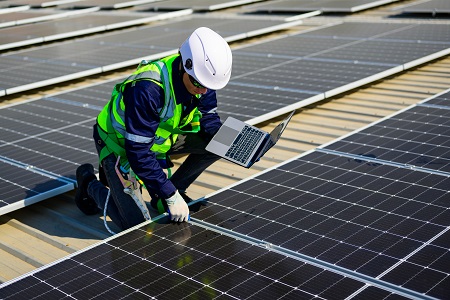Getting My Solar Panel Installation Virginia To Work
Getting My Solar Panel Installation Virginia To Work
Blog Article
Solar Panel Company Virginia: Lumina Solar Specializes In Providing Advanced Photovoltaic Solutions For Residences And Services
History and Founding
Have you ever questioned how a photovoltaic panel company springs from a simple spark of inspiration into a powerhouse of renewable resource? It frequently starts with a vision-- one sustained by a blend of development, determination, and a pinch of serendipity. The journey of many solar business mirrors the advancement of the innovation itself: from large, inefficient panels to streamlined, high-efficiency marvels harnessing the sun's bounty.
The Early Days
In the late 20th century, when solar energy was still a niche principle, leaders planted seeds for what would end up being an international movement. Think of a little workshop filled with curious engineers, tirelessly explore solar batteries. Their enthusiasm was palpable, typically driven by a desire to combat climate change and decrease dependence on fossil fuels.
One such anecdote has to do with a creator who, motivated by an outdoor camping trip, understood that even in remote locations, the sun could power vital devices. This easy observation stimulated a business's mission to equalize access to clean energy.
Establishing Concepts

- Development: Continuously pushing the borders of solar innovation to improve effectiveness and durability.
- Sustainability: Devoting to eco-friendly manufacturing and minimizing carbon footprints.
- Ease of access: Making renewable energy services budget-friendly and practical for everyday users.
Turning points in Growth
| Year | Secret Event |
|---|---|
| 1985 | Business founded in a small garage, focusing on research study and development. |
| 1995 | Very first industrial solar panel product introduced, gaining local attention. |
| 2005 | Expanded to international markets, accepting global eco-friendly energy goals. |
| 2015 | Presented advanced solar panel innovation with improved energy conversion. |
Isn't it fascinating how these incremental steps, often overlooked, form the energy landscape today? The photovoltaic panel company story is not practically innovation; it has to do with a relentless quest for a brighter, cleaner future.

Innovations in Solar Panel Technologies
Ever noticed how some photovoltaic panels shine brighter and last longer? It's not magic; it's the science of photovoltaic efficiency. Modern photovoltaic panel business invest heavily in technologies like bifacial cells, which record sunlight from both sides, enhancing energy harvest without expanding roofing area. Have you ever questioned why some panels carry out much better on cloudy days? That's due to advances in thin-film solar innovation, which thrives under diffused light conditions.
Item Variations Tailored to Distinct Needs
One size never ever fits all. Solar panel providers now offer:
- Monocrystalline panels for maximum performance and sleek looks, suitable for space-constrained roofs.
- Polycrystalline panels, which use a cost-efficient option without sacrificing too much output.
- Building-integrated photovoltaics (BIPV), merging solar tech seamlessly into architectural aspects like windows and exteriors.
Choosing the right product isn't just about in advance cost; it has to do with matching your environment, energy objectives, and long-term savings. Homes shaded by trees need panels that stand out in low-light situations, something many overlook up until energy bills climb up all of a sudden.
Technical Tips for Ideal Selection
- Assess the temperature coefficient-- lower values indicate panels lose less efficiency on hot days.
- Look for panels with improved anti-reflective coverings to take full advantage of light absorption.
- Think about the panel's guarantee not just for defects, but for guaranteed power output over years.
- Do not ignore the significance of the inverter innovation coupled with the panels; it can make or break your system's efficiency.
Beyond Panels: Emerging Patterns
Picture photovoltaic panels that change their angle automatically to go after the sun-- tracking systems are becoming more accessible, increasing yield significantly. Or solar tiles that blend invisibly into your roofline, changing your home into a silent, self-sufficient power generator. These innovations are reshaping what a photovoltaic panel company offers-- not simply items, but incorporated energy options.
Market Presence and Global Operations
Ever question why some photovoltaic panel business appear to sprout up in every corner of the world read more while others barely make a ripple? The distinction lies not simply in technology but in mastering the art of navigating diverse markets. Broadening worldwide is like planting seeds in various environments-- you need to comprehend each environment's special conditions to flourish.
Take, for instance, the detailed dance of logistics and supply chain management. Delivering panels halfway throughout the world isn't practically distance; it's about timing, customizeds, tariffs, and adapting to local demand changes. A company with robust worldwide operations anticipates these variables, ensuring panels arrive on schedule without pumping up costs. This foresight is no little task and often separates industry leaders from followers.
Secret Strategies for Expanding Market Existence
- Localized production: Establishing production hubs near target markets lowers shipping delays and import complexities.
- Strategic partnerships: Working together with local companies accelerates market penetration and develops trust.
- Adaptive product design: Tailoring photovoltaic panel tech to weather, sun intensity, and facilities nuances enhances performance and acceptance.
What about the human factor? Solar panel companies running internationally must reconcile cultural differences and regulatory nuances without losing sight of their core mission. What works in a sun-drenched desert may falter in a humid seaside region. Sometimes, the most ingenious option is simply listening-- soaking up regional insights to fine-tune technology and technique.
Experts frequently recommend a phased rollout rather than a shotgun expansion. Why run the risk of overextension when measured growth builds sustainable momentum? Scaling carefully means balancing ambition with functional strength - Solar Panel Company Virginia. In the race for sustainable energy supremacy, patience can be as important as speed.
Environmental Impact and Sustainability Practices
When photovoltaic panels first emerged, lots of assumed they carried absolutely no environmental baggage. The reality is more nuanced. The production of photovoltaic cells involves uncommon earth metals and energy-intensive processes, which can leave a large carbon footprint before the panels even reach rooftops. Yet, the true ecological expense depends heavily on the sustainability practices employed by the photovoltaic panel company throughout the lifecycle of their products.
How often do we stop briefly to consider what takes place to solar panels at the end of their helpful life? Unlike batteries or electronics, solar panels can last 25-30 years, however disposal and recycling pathways stay underdeveloped in numerous regions. A company devoted to decreasing ecological damage will have a robust plan for recycling photovoltaic products, restoring valuable silicon, glass, and metals to prevent garbage dump build-up.
Key Sustainability Methods
- Using low-impact manufacturing strategies that minimize water and energy consumption.
- Executing closed-loop systems to recycle production waste back into brand-new panels.
- Participating in transparent supply chain audits to make sure ethical sourcing of basic materials.
- Creating panels for easier disassembly to assist future recycling efforts.
It's worth noting that some solar companies have originated innovative methods, such as incorporating naturally degradable parts or using less poisonous chemicals throughout fabrication. This not just decreases ecological strain however likewise sets a precedent for the industry. The question stays: can the solar market really pivot towards a circular economy design without compromising efficiency or affordability?
Professional Tips for Evaluating Sustainability
- Inquire about the business's dedication to carbon-neutral production and whether they balance out emissions.
- Investigate if they partner with accredited recycling centers committed to solar panel waste.
- Try to find openness reports detailing environmental impacts and sustainability objectives.
- Consider the durability and warranty of panels as an indirect measure of resource effectiveness.
In the end, selecting solar energy ought to imply more than just slashing electrical energy costs; it has to do with supporting a future where energy is collected properly and waste is attentively handled. Photovoltaic panel companies that embrace this philosophy not only brighten homes but also cast a brighter light on sustainable innovation.
Report this page